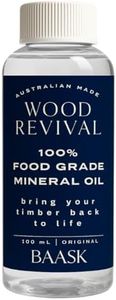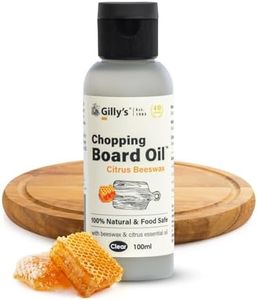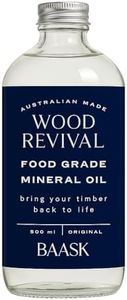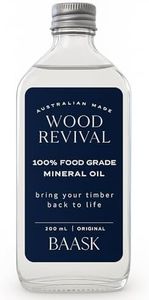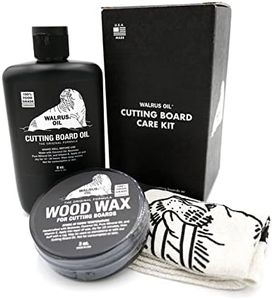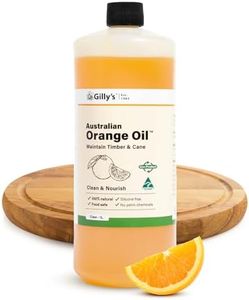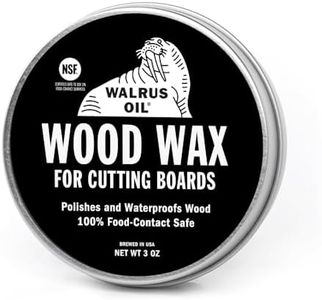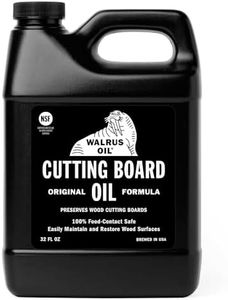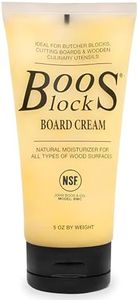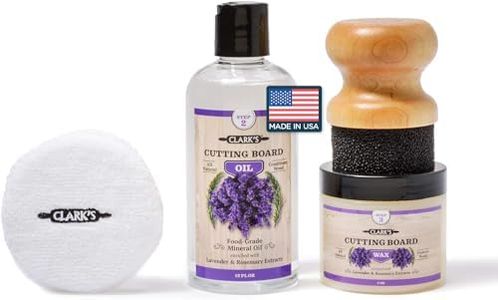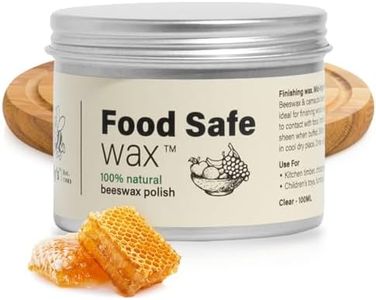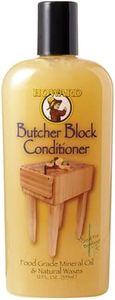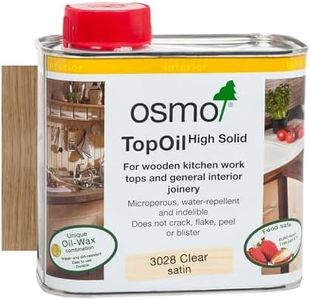We Use CookiesWe use cookies to enhance the security, performance,
functionality and for analytical and promotional activities. By continuing to browse this site you
are agreeing to our privacy policy
10 Best Oil For Cutting Boards
From leading brands and best sellers available on the web.Buying Guide for the Best Oil For Cutting Boards
Choosing the right oil for cutting boards is important because it helps maintain the wood, prevents it from drying out or cracking, and keeps your food preparation surface sanitary. The key is to pick an oil that penetrates and protects the wood without going rancid. Understanding the key properties of cutting board oils will help you select the best fit for your needs.Food SafetyFood safety means the oil can be used on surfaces that come in contact with food without any risk to health. It's very important because cutting boards are used for meal preparation. Look for oils specifically labeled as food-safe—these are usually mineral oils and some natural oils that are non-toxic and won’t promote bacteria growth. Avoid oils not meant for kitchen use, as they may contain harmful chemicals. Always check for a food-safe label, and if you are unsure, research to confirm the oil's suitability for kitchenware.
Type of OilOils for cutting boards fall mainly into two types: mineral oil and natural oils. Mineral oil is the most common, as it is odorless, tasteless, food-safe, and resists going rancid. Natural oils like coconut, walnut, or beeswax blends are also used, but some, like vegetable or olive oil, can spoil or leave a sticky residue. When choosing, consider allergies (avoid nut oils for those with sensitivities) and maintenance preferences—mineral oil needs to be reapplied more frequently, while certain natural blends may last longer.
ViscosityViscosity refers to how thick or thin the oil is. Thinner oils penetrate the wood quickly and deeply, offering good protection from the inside out, while thicker oils or wax blends provide a protective surface layer that makes the board more water-resistant. If you are conditioning a very dry or old board, a thinner oil is best for rejuvenation. For ongoing maintenance, a thicker oil or an oil-wax blend adds extra defense against moisture. Think about the current state of your board and whether you need deep conditioning or just surface maintenance.
Odor and FlavorSome oils have distinct smells or a taste that could transfer to your food, while others are neutral. Mineral oil is odorless and flavorless, making it popular. Some natural oils, like refined coconut oil, are neutral, but others, like sesame or olive oil, have strong flavors that may linger. Choose an oil that doesn’t compete with your food—this is especially important for boards used with breads or fruits, where subtle flavors can be picked up.
Longevity and Maintenance FrequencyCertain oils last longer than others and require less frequent application. Mineral oil generally requires reapplication every few weeks, especially on new, untreated boards. Oil and wax blends can last a bit longer, protecting the wood from moisture over extended periods. If you prefer less frequent upkeep, choose a blend with wax, but be aware you may still need occasional touch-ups. The more you use and wash your cutting board, the more often it will need to be oiled.

